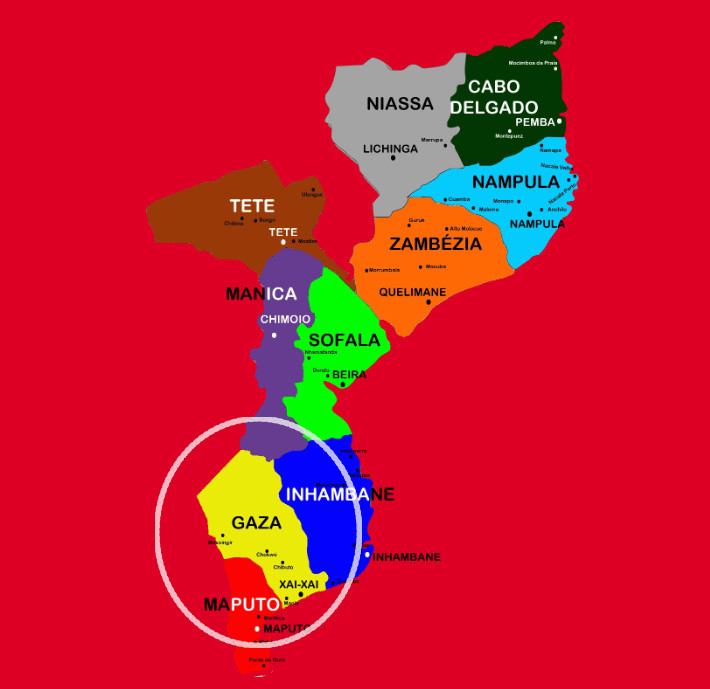MozambiqueExpert - Investors Guide
Invest in Gaza Province

Challenges & Risks
The decision to invest in Gaza Province, Mozambique, is accompanied by exposure to a unique array of risks and structural challenges that affect nearly every economic sector, from agriculture and extractives to tourism and infrastructure. While Gaza offers vast natural resources and strategic proximity to the economic capital of Maputo, investors must proactively mitigate risks spanning governance, climate volatility, and operational bottlenecks.
I. Systemic Environmental and Climate Risks
The most immediate and profound risks to investment in Gaza Province stem from its extreme vulnerability to environmental and transboundary shocks, particularly related to the Limpopo River basin.
Transnational Water Security and Contamination Risk: Gaza's reliance on the Limpopo River for its agricultural economy and water supply creates a systemic fragility linked to governance failures outside its borders.
In July 2025, the province faced an acute economic and public health emergency when an abnormal greenish coloration (algal bloom) was observed in the Limpopo River, a phenomenon also reported upstream in neighboring countries. This event demonstrated that the viability of Gaza's irrigated agriculture, a core economic engine, is acutely vulnerable to the inability of upstream nations (South Africa, Zimbabwe, and Botswana) to manage industrial, mining, and agricultural runoff.
Beyond acute events, there is a chronic health risk from Potentially Toxic Elements (PTEs), such as Mercury (Hg) and Uranium (U), detected in drinking water sources near the Limpopo National Park, posing persistent public health risks.
Climate Volatility and Disaster Frequency: Mozambique ranks among the most susceptible countries globally to climate hazards, including droughts, cyclones, and floods.
Gaza faces chronic exposure to severe drought in the semi-arid interior (districts like Mapai, Chicualacuala, and Chigubo) and catastrophic flooding in the Limpopo lowlands.
Climate change predictions indicate that extreme events will become more intense and frequent. Such events impact agricultural yield and production certainty and substantially increase the cost of infrastructure investments.
II. Operational and Infrastructure Constraints
While major projects have driven new infrastructure, chronic bottlenecks hinder operational efficiency, particularly outside urban centers:
Logistical Bottlenecks and High Transport Costs: Inadequate infrastructure, especially poor road quality in rural and secondary networks, severely limits market access and increases transport costs for goods.
This problem is acutely demonstrated in the extractive sector, where the Chinese company Ding Sheng Minerals stored over 506,000 tonnes of ore (titanium and zirconium) in Chibuto in 2023 due to the high costs and difficulties of road transport to the Port of Maputo.
Infrastructure Fragility and Maintenance: The existing road network, including those in flood-prone regions like the lower Limpopo watershed, is often in a poor state. Natural disasters pose a substantial risk to development outcomes, as future emergencies may cause further diversion of road maintenance funding for emergency restoration works.
Electricity Access and Reliability: Although Gaza generally has a relatively high electricity access rate compared to other provinces (approximately 46.20% as of 2017), grid supply is heavily concentrated in urban areas. Rural areas lack access to power, limiting the development of irrigation, on-farm agro-processing, and storage. The state utility (EDM) faces a fragile financial situation, which affects its ability to maintain contracts with private players and can lead to unreliable supply.
Water Infrastructure and Quality: Access to reliable water supply is limited in rural areas. Public health facilities in Gaza often suffer from a lack of reliable water supply.
III. Governance, Financial, and Labor Risks
Investors face cross-cutting constraints related to the overall business environment in Mozambique, which translates into higher operational costs and reduced predictability in Gaza:
Unfavorable Investment Climate and Regulatory Uncertainty: Mozambique's overall investment climate is perceived as risky, ranking poorly in global indexes.
The investment regime suffers from outdated and fragmented laws, absence of implementing regulations, and concerns about the predictability and enforceability of investors' rights.
The complex regulatory environment includes issues like bureaucratic procedures for business operations and delays in obtaining necessary permits. The Land Law and associated complex procedures also heighten investor uncertainty and perception of risk.
The restrictions on free transfer of funds out of Mozambique severely hurt its investment competitiveness.
Access to Finance and High Costs: Investment is hampered by financial constraints and high capital costs.
High interest rates limit access to finance for SMEs. SMEs pay around 15 percent to over 20 percent for bank loans.
For agribusiness, the lack of a specific development bank and the aversion of commercial banks to development financing are major challenges.
Investments in agriculture can be risky as loans given in US dollar-indexed terms can double in meticais following exchange rate crises.
Skills Gaps and Labor Constraints:
Weaknesses exist in managerial and worker skills. The workforce often lacks the necessary skills required by complex projects.
The high-tech nature of extractive projects means that Mozambique often lacks the specialized skills required, leading to reliance on costly foreign workers.
Investment in manufacturing and private entrepreneurship are constrained by the lack of a sufficiently qualified local labor pool and onerous labor legislation.
Labor Disputes pose an immediate operational risk, as seen in November 2025 when over 700 workers at Dingsheng Minerals went on strike in Chibuto demanding better wages and fair contracts.
IV. Sector-Specific Vulnerabilities
Agribusiness
The sector, despite its potential ("The land for agriculture is there, water is there"), faces risks beyond climate exposure:Processing and Market Guarantee Gaps: The core challenge for farmers producing crops like rice, cashews, and bananas is not production, but processing and distribution. Small farmers require guarantees that what they produce will be sold and not go to waste.Post-Harvest Losses: Physical grain losses prior to processing can range from 10% to 20%.
Extractive Industries (Heavy Sands)
While Gaza hosts major mineral resources, large-scale extraction introduces specific risks:
Environmental Conflicts and Damages: Extractive activities in Chongoene, specifically sand extraction, have contributed to environmental degradation, including the destruction of dunes. Companies face concerns regarding their capacity to guarantee effective rehabilitation of mine sites.
Political and Social Costs: Conflicts of use between local community interests and international investors' priorities are apparent. The need for resettlement due to industrial expansion, such as the port for heavy sand transport in Chongoene, creates social risks.
Tourism
Investment in Gaza's burgeoning tourism sector is threatened by instability and institutional capacity issues:Failed Conservation Model: The development model predicated on the Limpopo National Park (LNP) to promote socio-economic development through tourism has fundamentally failed to deliver promised benefits.
Tourist numbers have been consistently "far lower than projected". This failure has generated social conflict and distrust in official structures, a significant risk for long-term eco-tourism concessions.
External Perception: Tourism is highly volatile and susceptible to negative influences like political disturbances and natural disasters. Mozambique suffers from a relatively poor international image often linked to floods, diseases, and droughts.
Regulatory Gaps: The absence of a clear legal framework for private concessions in conservation areas hinders investment and heightens investor uncertainty.
Related Readings
